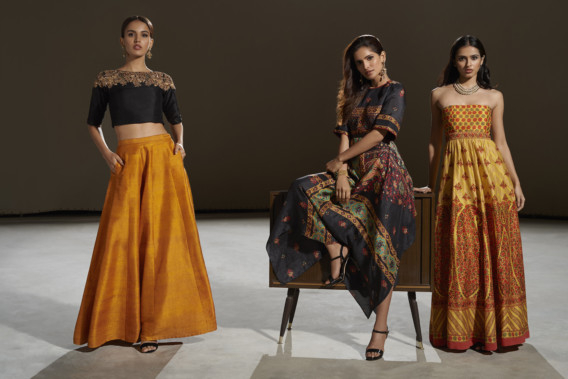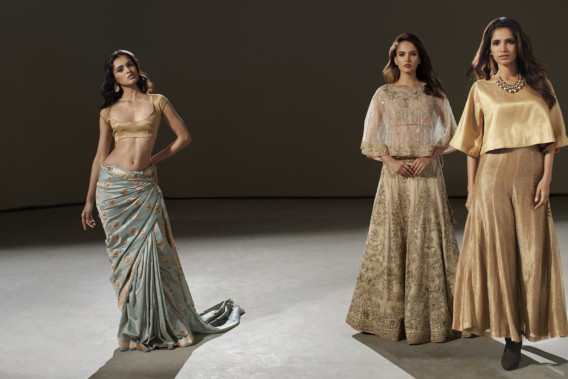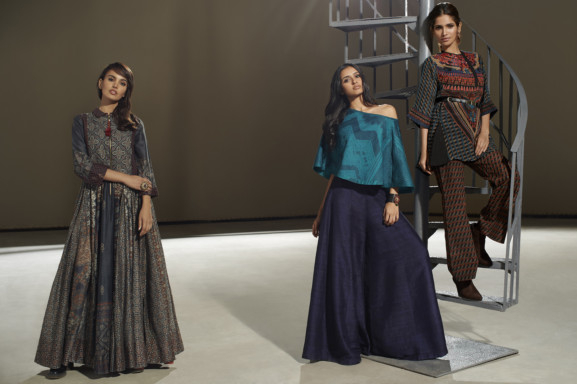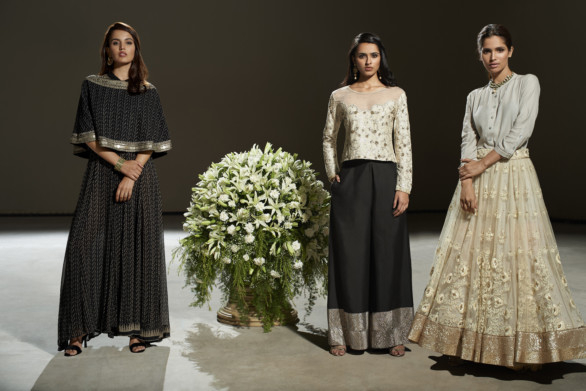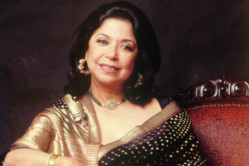
Ritu Kumar has been designing for the Indian fashion industry since a time the terms “fashion” and “trend” were relatively unknown in the country. Now, almost 45 years later, she’s a name recognised all over the world and Dubai happens to be a favourite place; she opened her second boutique in the city last week at Dubai Festival City.
Kumar started designing bridal wear and brought in what can be termed as Indian “couture” in the 1960s and 70s, trying to refresh the dying indigenous practices of weaving and handloom.
“When I started, we were like barefoot doctors going out into the field to discover the embroideries, the prints. That was the post-independence era in India when there was a ban on just about anything that was imported,” Kumar told tabloid!. “I couldn’t import even a small thing like a button or a zip. So we had to find alternatives from within the country. Thereby, we came up with a very strong identity outside India and that continues, as [we are] perhaps the only country in the world that is not dictated by Paris or New York.”
And the new boutique, she says, “is in keeping with this language” that designers in India have been striving for.
“India has been known for its very exotic embroideries, its bridal collections and sometimes its over-the-top dressing [style],” she continues. “We love costumery. This line actually is very high street but with a difference. The difference is the fabrics, which are very natural — mainly cotton, which the world is almost not using any longer — and it comes from [having deep] root[s]. It has taken inspiration from the main craft areas in the country, used the aesthetics and put on to fairly modern clothes with which the younger generation — or anybody — could vibe.”
What are the demands of UAE customers?
Fashion demands are becoming very international. They are not pockets — other than that of wedding clothes. The world is dressing similarly as the younger, the modern woman has access to the same things in India as in America. It’s just that choices are now more interesting. They are starting to see the difference between handmade and machine-made. That’s where lies the diversity and richness of what I’ve been able to do for a long time now.
You are a forerunner for haute couture in India, which mainly sees bridalwear as couture. How has couture changed?
We don’t follow trends in India, we create our own, going with the climate and our traditional aspects. So it is a very exciting place to be but it has come a long, long way from nothing to having about 40 fashion weeks and a huge population that enjoys them.
The state of haute couture in India is perhaps the healthiest as compared to the rest of the world, in the sense it is not in the red. I mean, the latest [show] I’ve done is the Benares sari. You cannot imagine the expertise that goes into weaving the Benares sari. So couture in India maybe defined as slightly different because they are not ball gowns. But definitely a six-month’s work on a lehnga for a bride is couture — and it’s very much alive and kicking.
Yes, with shows like the one you had at Lakme Fashion Week last month, designers are showcasing the expertise of these craftsmen and they’ve finally started to receive their due. What are the challenges you faced with them, if any?
When I started working the biggest challenge was that the craftspeople and their work was non-existent. We are talking of about 150 years of colonial rule whereby the taxes that were levied on these indigenous crafts had actually wiped them out. So when we went back to work in this area — at least when I did — I used museum collections to figure out what it was that they made earlier. It was not an easy journey but was very exciting and enriching. And the crafts, from being practically non-existent are today a very strong force in India. We have 16 million people actively involved in textile crafts by hand. These are not studios, but people who are making a livelihood, whereby creating a fabulously miraculous day in fashion in India.
Even the government of India is now actively involved in this initiative. How do you think it’ll help the craftsmen?
Initially the government had hosted the Vishwakarma exhibitions, which had brought out all the crafts of India but, like everything, this also saw a slump. Today, the government recognises that textiles is the second-largest industry in India after agriculture and they are really focusing on it. Prime Minister’s [Narendra Modi] constituency is Benares [Varanasi] and he wants the handlooms there revived. India is the only country left in the world which has them or the craft of hand-weaving. So, it’s almost like a national treasure and we really have a responsibility to ensure that it stays there.
Would you then call this “sustainable” fashion?
I think sustaining something even as simple as cotton is a very important thing. Yes, you have the alternative man-made polyester fabrics but there’s a huge difference between the two. For a country like ours, a climate like ours and a tradition like ours, it’s extremely important that we are aware of the fact that if we destroy this we are destroying a complete lifestyle. So there is a responsibility, and also an aesthetic and a cultural background to this which I feel the country is deflecting at the moment through its fashion.
It’s a good time to look at understanding of fashion. It has been largely induced by deep pockets of the multinationals. I think it’s time now to ask ourselves isn’t there an alternative to this? And I think that’s what I’m trying to find.
Yes, the designers want it but do the consumers also want it?
I’m amazed that people want it. Fifteen years ago when the international high street labels made their way into India I thought, like China, we would lose it as well. Everybody would be wearing little black dresses and that would be the end of the sari. But it hasn’t happened and I really feel that’s a miracle. The younger generation may want to wear a top with jeans but [they are fine if it’s] made of khadi or some mirror work or bandini on it. So yes, because the aesthetics have been brought to their notice, they are sentimentally getting more attached to them.
How do you bring about this fusion in your designs?
I have line called the Ritu Kumar Line which is not bridal or the young, jumpy kid kind. It’s in between, like clubby dressing, which India does a lot. It’s about layering. It can [be] cotton, it can be non-structured clothes and that seems to be India’s way forward. I think lots of people vibe with that.
You started working at a time when women, forget work, were not allowed out of the house. What challenges have you faced as a woman in your career?
For one thing I wasn’t part of the traditional glamour industry. I went to a university where wearing khadi kurta [tunic], Kolhapuri chappals [slippers] and carrying jholas [totes] were cool. I grew in work in Bengal and received a lot of support from the craftspeople, because there was [really] no fashion at the time — we opened the first boutique in the country. If I faced challenges it was because I didn’t know where to go. There were no institutions like NIFT [National Institute of Fashion Technology]; there were no platforms where shows were held; there were no retail stores. Those were problems I had. But working as a woman in India, was not one.
What would you be if not a designer?
I think I’d probably be a museologist.



